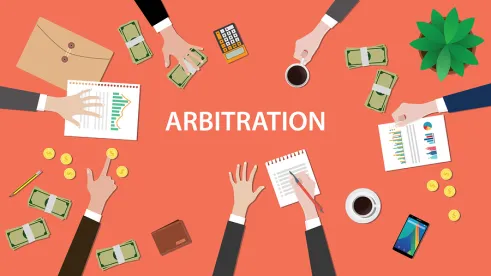On July 2, 2019, a three-judge panel of the Second Circuit reversed the lower court’s denial of a motion to compel individual arbitration of a putative class action suit brought under the Fair Labor Standards Act (“FLSA”) and New York Labor Law (“NYLL”). Abdullayeva v. Attending Homecare Services, LLC, d/b/a Attending Home Care, No. 18-651. The decision is significant in that it furthers a trend in favor of enforcing individual arbitration agreements that have the effect of precluding costly class action litigation.
Background
The Plaintiff, Abdullayeva, is one of many employees of Attending Home Care (“Attending”) providing home healthcare services to elderly residents in the greater New York City area. She is a member of the Local 1660 chapter of the Home Healthcare Workers of America, the union she was required to join as a condition of her employment. Attending and the union entered into a collective bargaining agreement (“CBA”) that was binding on Attending’s employees from May 2016 to April 2019. An amendment to the CBA’s “Adjustment of Disputes” provision stated that “all claims brought by either the Union or Employees, asserting violations of or arising under the [FLSA] . . . , New York Home Care Worker Wage Parity Law, or [NYLL] . . . shall be subject exclusively, to the grievance and arbitration procedures” outlined in the agreement. The amendment also provided the name of the arbitrator who would handle these arbitrations.
In October 2017, Abdullayeva filed suit, on behalf of herself and all similarly situated employees, alleging overtime and spread-of-hours violations pursuant to the FLSA and NYLL. Attending moved to compel arbitration. The United States District Court for the Eastern District of New York denied Attending’s motion for two reasons. First, the court held that the CBA permitted, but did not mandate, arbitration of Abdullayeva’s claims. Second, the court found that the CBA violated Abdullayeva’s due process rights because the union preselected an arbitrator without her input. In making its decision, the district court determined that the arbitration clause at issue was “at best ambiguous” and did not satisfy the “clear and unmistakable” test used in analyzing purported waivers of union members’ right to bring statutory claims in court.
The Second Circuit’s Decision
Attending appealed the district court’s denial of its motion to compel arbitration. The Second Circuit focused its inquiry on whether the parties agreed to arbitrate and the scope of the arbitration agreement. The Second Circuit held that the arbitration clause in the CBA (i) mandated, rather than permitted, arbitration of Abdullayeva’s FLSA and NYLL claims, and (ii) did not deny due process to Attending’s employees.
First, the Court concluded that “the Union agreed to mandatory arbitration in the CBA on behalf of its members and that the arbitration agreement at issue clearly and unmistakably encompasses Abdullayeva’s FLSA and NYLL claims.” In making this finding, the Second Circuit noted that the district court had improperly applied the Supreme Court’s “clear and unmistakable” standard to the question of whether an arbitration agreement existed in the first instance between the union and Attending. According to the Court, that standard is applicable at the next step of inquiry, which asks whether the “agreement clearly and unmistakably encompasses the plaintiff’s statutory claims.” Abdullayeva’s FLSA and NYLL claims were explicitly included in the CBA’s list of statutory claims subject to mandatory arbitration, which lead the Court to conclude that her claims must be arbitrated on an individual basis.
Second, the Second Circuit held that the fact that Abdullayeva did not personally select the arbitrator did not violate due process because the union was authorized to do so on her behalf. The court stated that the union, “[a]s Abdullayeva’s bargaining representative . . . was authorized to negotiate ‘conditions of employment,’ including arbitration clauses, with Attending on behalf of Attending’s employees.” The court hinted that it might have concluded otherwise if Abdullayeva had demonstrated that the arbitration agreement’s procedures provided inadequate notice, or that the selected arbitrator was biased.
The Court directed the district court to compel arbitration of Abdullayeva’s individual claims and stay further proceedings pending arbitration.
Implications
Considering that the original complaint sought a minimum of $500 million in relief on behalf of over 100 potential class members, the Second Circuit’s decision had the effect of substantially reducing Attending’s liability exposure. Other home health agencies within the Second Circuit’s jurisdiction that have entered into similar CBAs are likely to be similarly insulated from large liability exposures from suits brought by individual plaintiffs. More broadly, the decision bodes well for other employers who seek to reduce exposure to class action litigation by entering into individual arbitration agreements. Employers choosing this route should exercise care in ensuring that the scope of the arbitration clause is clear and that employees are effectively bound to the agreement, either directly or through their union representation.




 />i
/>i

